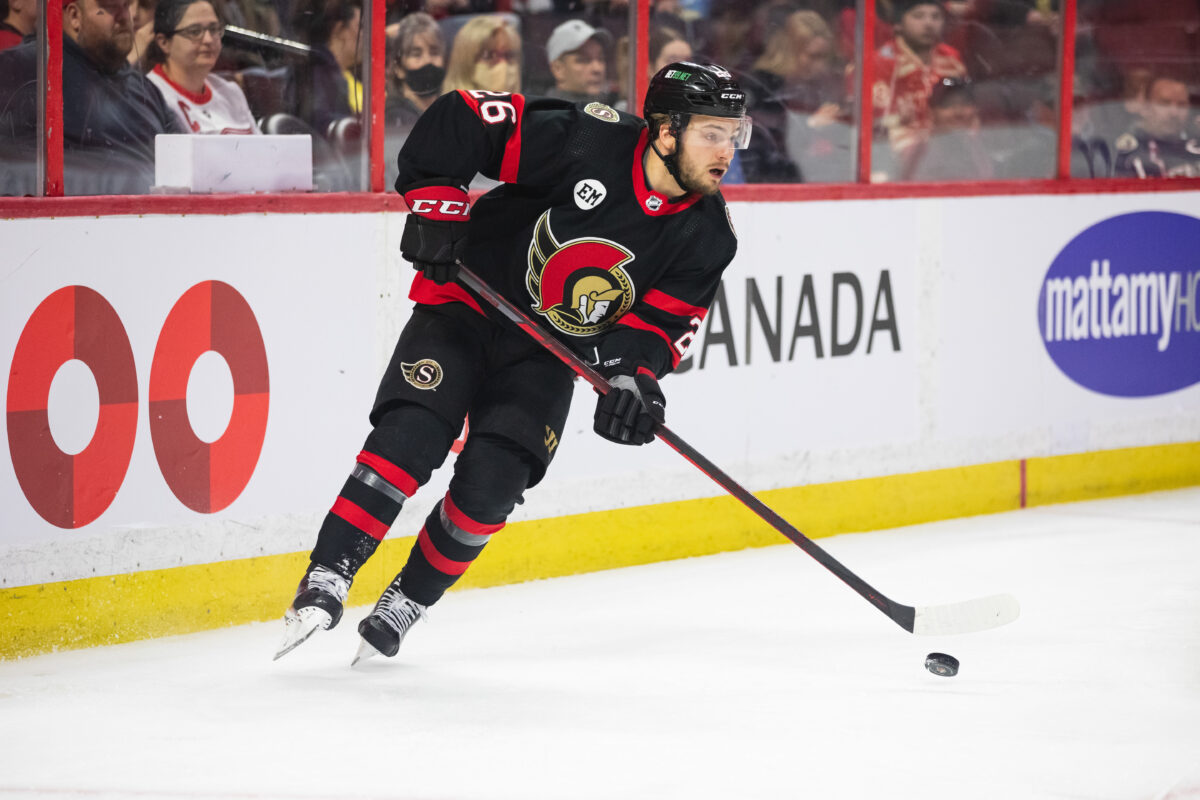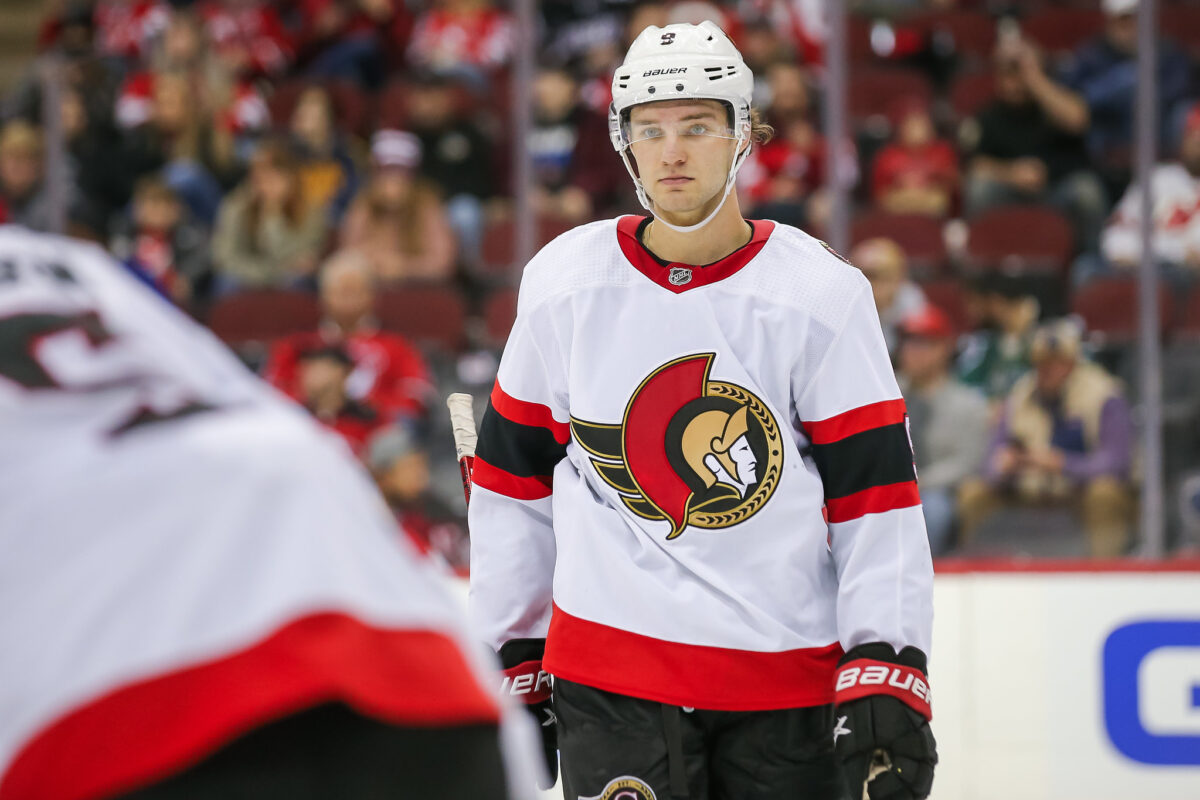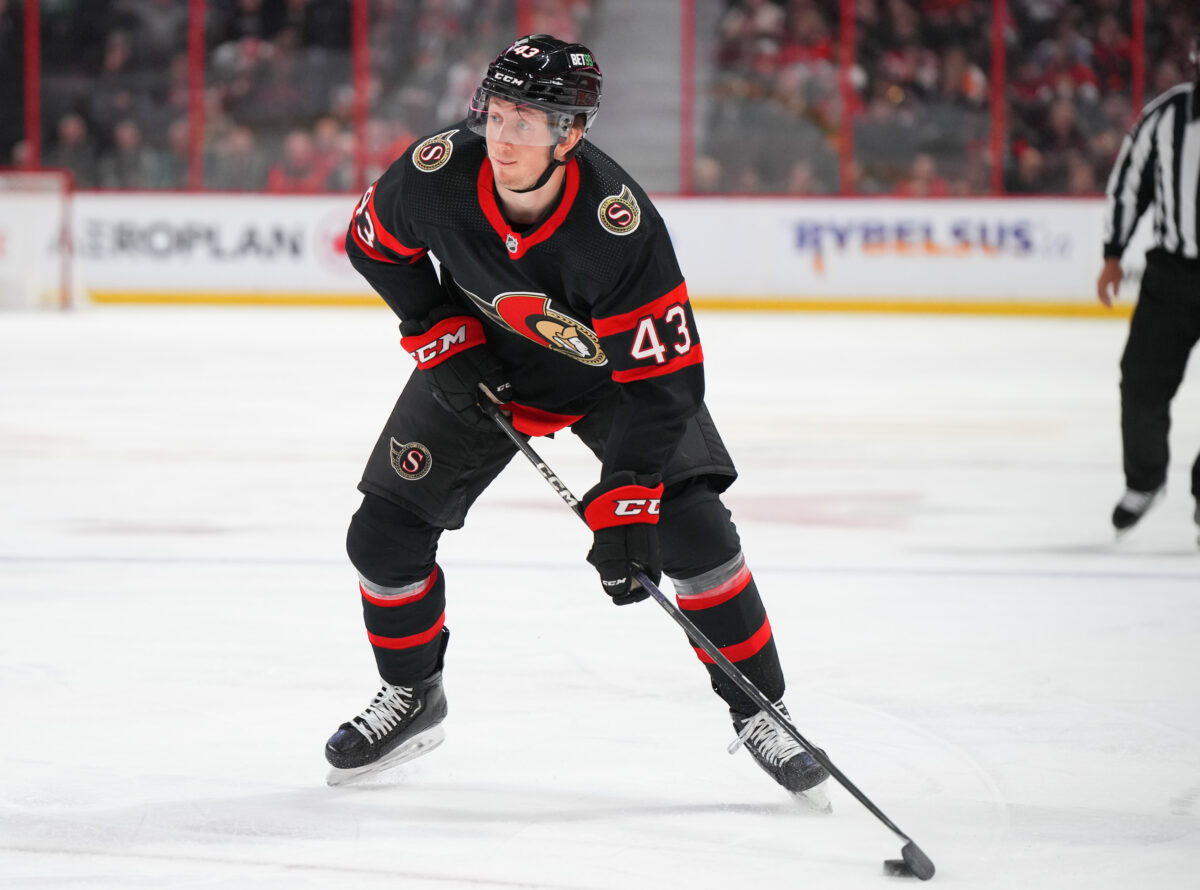The first ball has dropped in the Steve Staios era, with Vladimir Tarasenko heading to the Florida Panthers for a third-round pick in 2025 and a conditional fourth-round pick in 2024, with the Ottawa Senators retaining 50% of Tarasenko’s $5 million salary. The return is underwhelming, to put it lightly, but the Senators’ hands were tied by a full no-movement clause that gave Tarasenko a lot of input and handcuffed the team in what they could get in return.
However, there is a silver lining – Staios isn’t afraid to cut ties with ineffective acquisitions from the previous regime. It’s no secret that, as general manager, Pierre Dorion loved to give out no-movement clauses, and many of those have come back to bite the team. But there is one player who, despite being a crown jewel for Dorion, never got one – Erik Brannstrom. With Elliotte Friedman writing in 32 Thoughts that teams have been kicking Brannstrom’s tires, and according to Darren Dreger, others are starting to circle back on him, there may be a deal in the works. If that’s the case, Staios has the perfect opportunity to get some cap space and some assets for a player who has little future left in Ottawa.
Dorion’s Biggest Mistake
In 2019, amid a painful rebuild, the Senators shipped out fan-favourite and the team’s best player, Mark Stone, to the Vegas Golden Knights for Brannstrom, Oscar Lindberg, and a second-round pick in 2020. It was a tough deal to swallow for the Ottawa faithful, but Dorion was ecstatic with the return, saying,
“Mark will be missed. Knowing that, this deal returns a young player who our fans will love for many years to come…Brannstrom is the top defence prospect in the game; simply a dynamic talent who will be a major component of our future. We could not be more excited to look at the future of having Erik join the other young prospects in the Senators organization. He’ll be a cornerstone player of our rebuild.”
from ‘Senators trade Mark Stone to Vegas for package including Erik Brannstrom’, The Globe and Mail, 25/02/2019.
It’s common for GMs to pump the tires of their new acquisitions, but even back in 2019, that level of praise of Brannstrom was a bit extreme. There was no question that the young Swede was a fantastic prospect. He was drafted 15th overall in 2017 after a fantastic performance at the Five Nations Tournament and earned comparisons to Torey Krug and Kimmo Timonen due to his impressive transitional game. Two years later, he looked guaranteed to be a top-pairing defender after scoring 28 points in 41 games as an American Hockey League (AHL) rookie. But a franchise cornerstone? That didn’t seem realistic.

Unfortunately, not only did Brannstrom fall far short of his projection, but Dorion’s claims turned a promising trade into one of the worst moves in his time with the team. In his six seasons with the Senators, Brannstrom has played 243 games and scored seven goals and 62 points primarily while being deployed in the bottom four. His defence has improved during his time in the NHL, making him a valuable asset in Ottawa, but he never ascended past a depth defenceman, which is not the best place for him and has stunted his development.
Of course, that has little to do with Brannstrom. Despite praising him as the second coming of Erik Karlsson, Dorion didn’t ever show that he believed he could do it. After his entry-level deal expired, Brannstrom was signed to a one-year, $900,000 contract, then re-signed to a two-year, $4 million deal in 2021-22. For being a cornerstone player, Dorion didn’t seem as though he wanted to commit long-term to the player, something he’d never been afraid to do before. Organizationally, there was never any confidence in Brannstrom, but there also wasn’t any attempt to move him, as Dorion didn’t want his already bad trade to look even worse. He became one of his guys, which was the worst thing for his development and the Senators.
A Potential Brannstrom Trade Return
The good news is that, with Dorion gone, Staios can make some significant changes to the roster, and moving Brannstrom needs to be a high priority. A restricted free agent at the end of the season, the 24-year-old would be a solid depth addition to a playoff team as he brings a solid defensive game and great puck movement abilities if given the right opportunities. He also has the potential to re-sign for cheaper than what he’s making now, which should entice some bidders ahead of the March 8 Deadline. But what can the Senators expect to get back if they move him?
Related: 3 Under-the-Radar Trade Deadline Targets
Firstly, and most importantly, is cap space. Before Josh Norris was placed on long-term injured reserve, the Senators had practically no cap space, which made even the simplest of moves like calling up prospects virtually impossible. There is no current timetable for when Norris will be back, but when he does return, Ottawa will once again be at the cap ceiling and need to find someone else to move. Getting rid of Brannstrom’s $2 million cap hit provides a bit of a buffer.

Beyond cap space, though, the Senators probably can’t expect much in return. Earlier this season, the New Jersey Devils acquired Kurtis MacDermid from the Colorado Avalanche for a seventh-round pick and a long-shot prospect. Although MacDermid is a gritty, defensive defenceman who brings toughness and leadership, it feels like a comparable deal in terms of the position that he and Brannstrom both play, which is a bottom-pairing defenceman with minimal expected impact.
One team that seems to make sense for Brannstrom is the Carolina Hurricanes. They have a history of taking risks on promising yet undersized players, and their system feels like it might accommodate him much better than Ottawa’s does. Using the MacDermid trade as a guideline would result in the Hurricanes parting with their seventh this year and a prospect like Anttoni Honka, Joel Nystrom, or Ronan Seeley.
Senators Have Better Options for the Bottom Pair
Brannstrom was never supposed to be a bottom-pair defenceman, and putting him there didn’t help anyone. Thankfully, if the Senators choose to move him, they have several players in the system who can replace him. Tyler Kleven is a great third-pairing option, having the size, shot, and snarl that are needed on the team. Jacob Larsson is another left-shot option. He’s a former first-round pick who hasn’t found his place in the NHL since his sophomore 2019-20 season, but he only makes $775,000 and has had success with the Belleville Senators.

Looking further down the road, Jorian Donovan could be brought into the spot after a season or two in the minors. He’s been on a tear this season in the Ontario Hockey League (OHL), becoming one of the best two-way defenders in the league. He has the physicality and puck skills to be an effective NHL defender, but his potential is limited to a second-pairing defenceman at best. Tomas Hamara is another player in a similar boat and has been quite successful in the OHL this season, but has more of a defensive mind that would make him a better long-term depth option. Donovan Sebrango and Dillon Heatherington are also valid options, although they may be more temporary as they don’t offer much upside at this point in their careers.
Regardless of what happens in the next day or two, the Senators need to make moves. Sending Tarasenko out the door to his preferred destination was a good start, and even though the return wasn’t great, it was at least something. That should be the mindset when dealing with Brannstrom; he doesn’t fit on this roster anymore and isn’t getting re-signed, so if someone is making an offer, the Senators need to take it. It’s a win-win scenario – Ottawa gets cap space and an opportunity to try out new defensive pairings, and Brannstrom finally gets a chance to be the player he always should have been.
